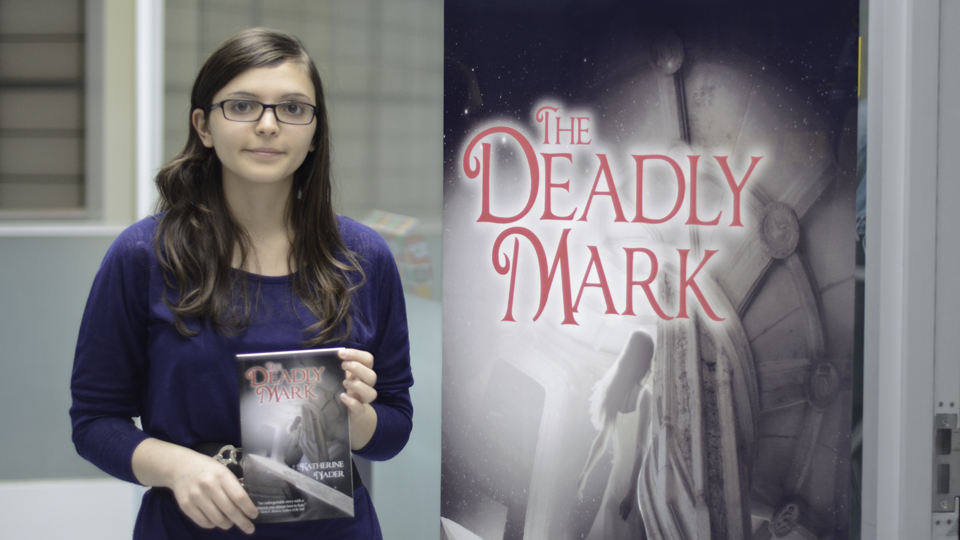Seventeenth-century English philosopher, statesman, scientist, and author Sir Francis Bacon once said, “A wise man will make more opportunities than he finds.” I wonder if Bacon was describing the world of 21st-century publishing when he uttered that line.
Last Thursday, UTM’s English and Drama Student Society hosted the “How to Write a Novel and Get It Published” workshop to guide students through the process of literary publishing—a process that requires seizing opportunities. Katherine Nader, EDSS’s events coordinator and the author of a self-published novel, The Deadly Mark, presented the world of publishing through the lens of her experience working with the self-publisher iUniverse.
The workshop started with an introduction by Nader, who explained how her story came to be and how it went from her computer and into the hands of iUniverse.
“My high school writer’s craft teacher knew about that stuff,” said Nader. Instead of handing in the planned assignments for the class, Nader made a deal with her teacher: if she continued writing the book she had started, she could submit it as a portfolio for her grade in the class.
With her teacher’s guidance, Nader prepared her novel for literary agents, who serve as the intermediary between a writer and a publisher or producer. The agent assists the writer in negotiating a publishing deal with whichever company suits the writer’s work best.
According to the Writers’ Union of Canada, 80% of published Canadian writers do not employ agents to represent them. So what’s the appeal in having an agent?
Nader explained in her presentation how helpful it was having someone on her side who knew the field: “Your agent will have a good idea of what type of genre publishing companies are looking for, and that can help you pick which company you’ll have the most success with.”
As the workshop progressed, it became clear to me that anyone with a manuscript has the potential to publish it. What sets the published apart from the unpublished is simply the desire and persistence to push for a deal.
But once your manuscript is ready, you have to edit it. You have to get your family and friends (at least) to look at it and give you their honest opinion. This idea is enough to stop many of us dead in our tracks; sometimes the idea of foreign eyes on our work is enough to put publishing dreams under the mattress for good.
When the first 10 to 30 pages of your manuscript are ready, it’s time to approach a literary agent. This process is extremely specific to the individual agent.
“If you don’t submit your cover letter and synopsis in the exact right format, they won’t even look at it,” Nader said.
The cover letter should contain some combination of a two-sentence summary of your novel, why you wrote your novel, a comparison of your novel to three others published recently, a little background on your life, and who you think your target audience is. Often, you will also need to provide a more detailed synopsis that clearly lays out the key plot points of your novel.
There being few literary agents available in Canada, it may take a while to hear back from one; sometimes it can be weeks or months. When they do get back to you, they’ll expect the first 10 to 30 pages of your novel. At this point, discussions can begin about which company will be most interested in your book based on the genres each company tends or plans to publish.
“Sometimes it takes three years to get your book published,” warned Nader.
As a writer myself, I left the workshop with mixed feelings. Retaining the essence of your work and creating it solely as a means of self-expression can feel at odds with tweaking your writing to make it appropriate for publishing. But for those ready to share their work with the world, be at ease knowing that your dream is only too possible, and the opportunities to bring it to life are plentiful.

